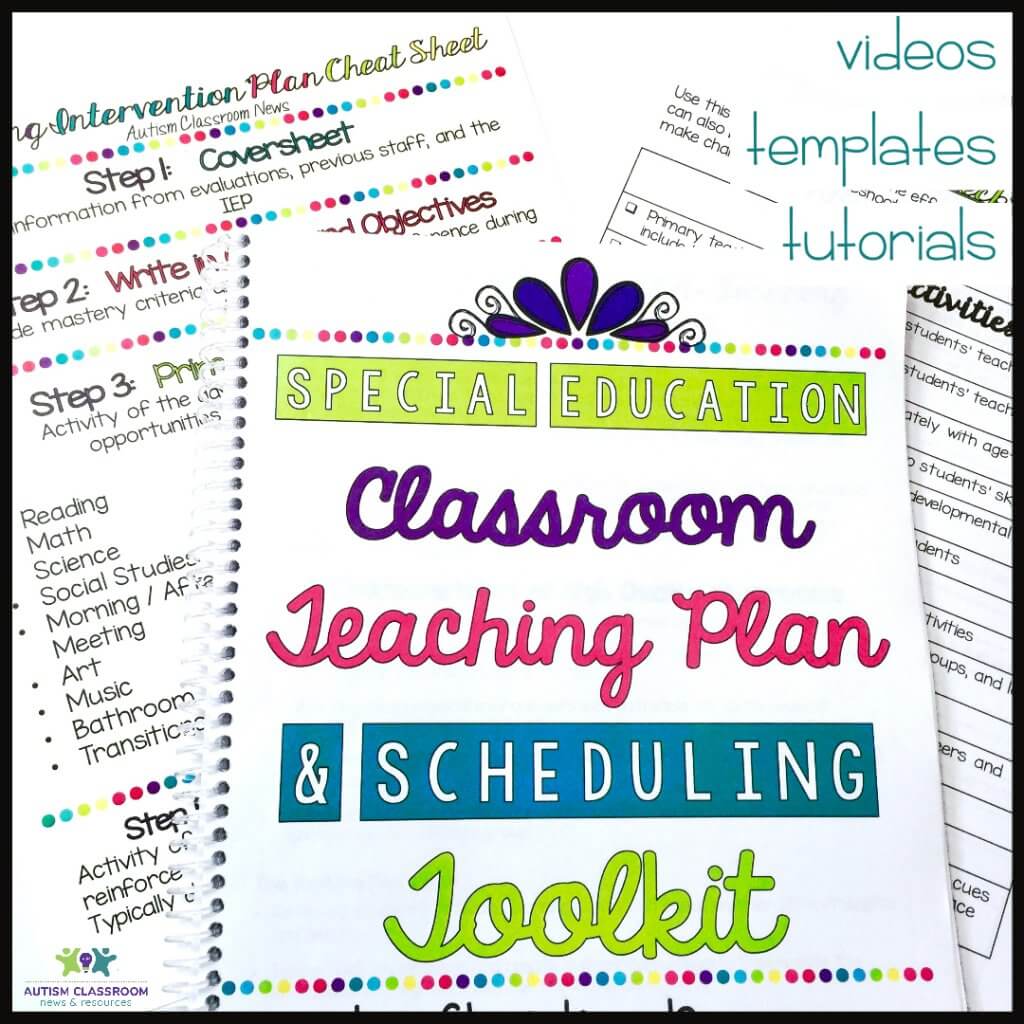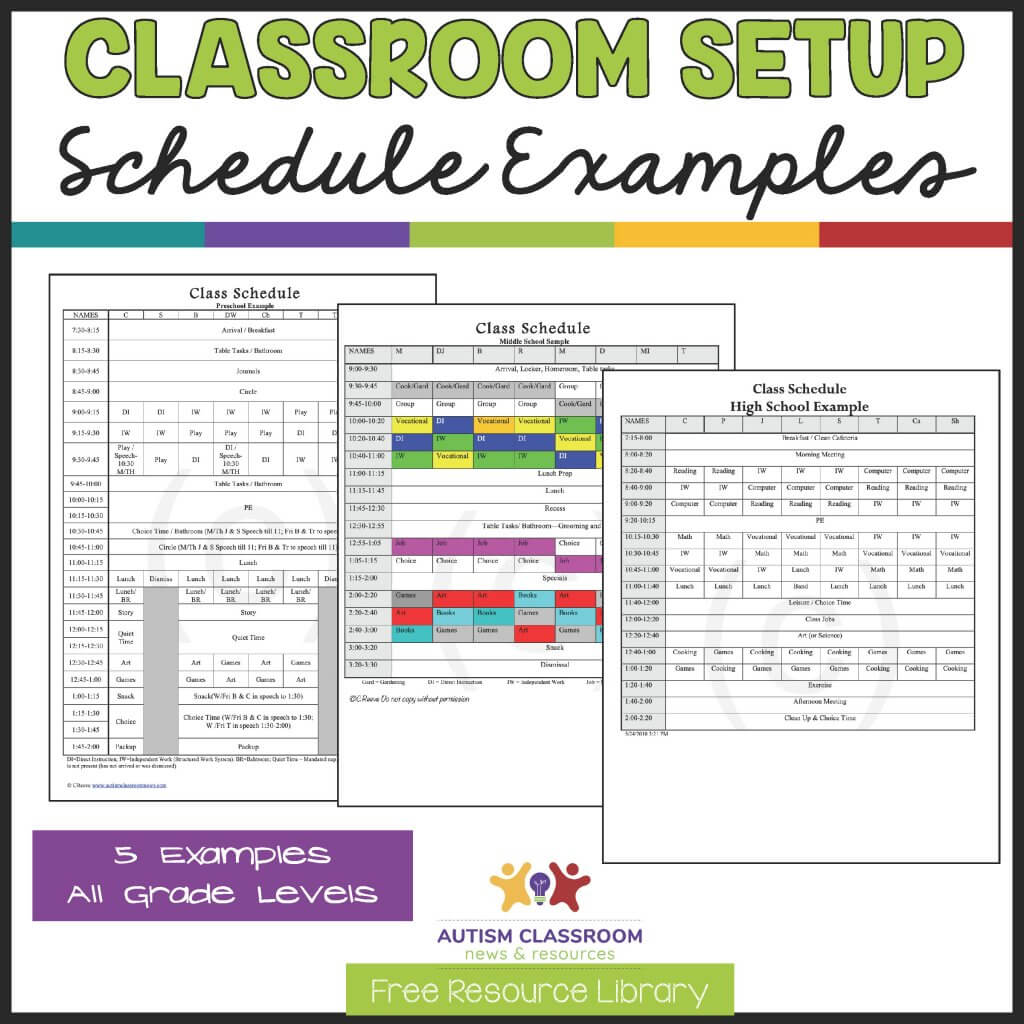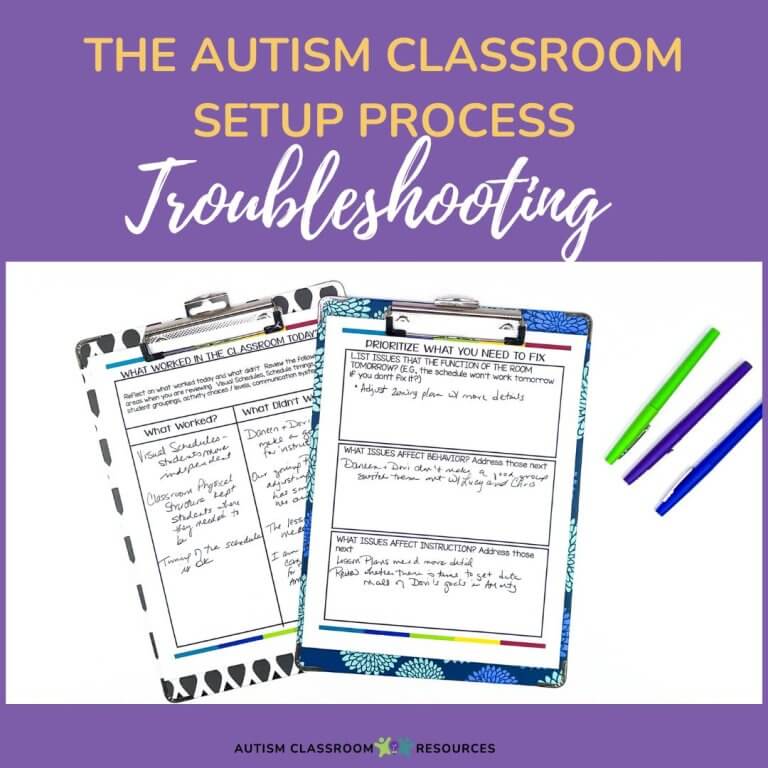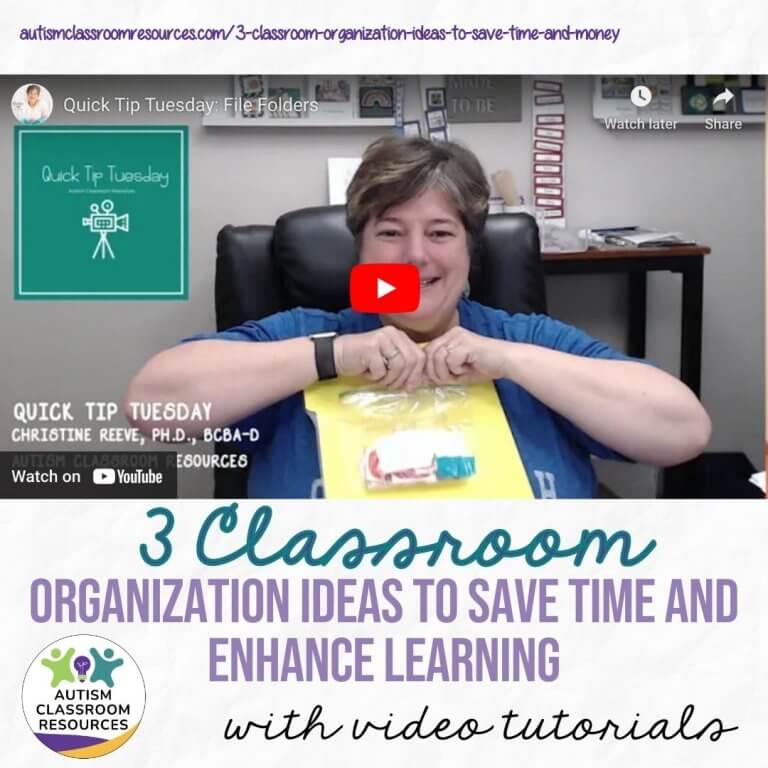Sharing is caring!

Autism classroom setup can be a huge challenge. Sometimes, a classroom is specifically for students with autism. Other times, students with autism are being educated in a special education classroom with students with other needs. Many times, they are participating in general education classrooms. Regardless of the type of classroom, if it will work for students with autism, it will probably work for most of your students.
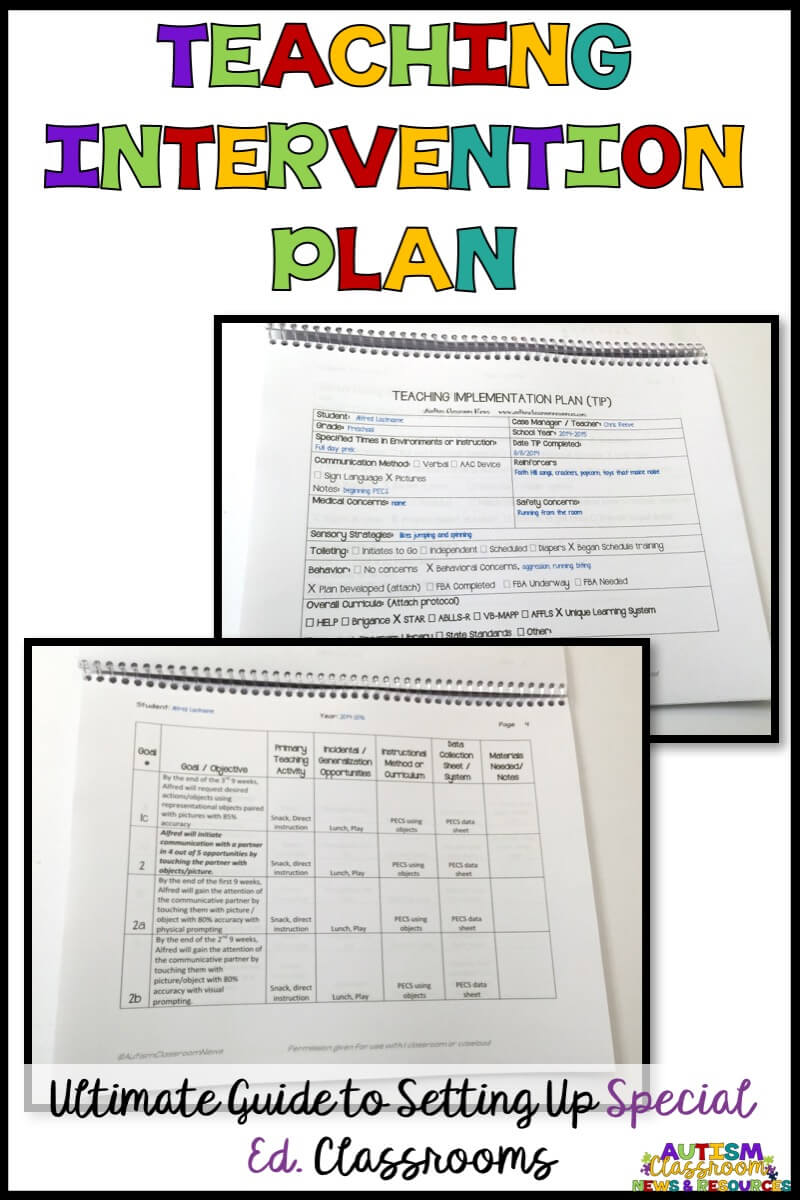
One of the challenges of autism classroom setup is that it is different every year. How you setup the class depends completely on the needs of the students in the class. So, there is no “set it and forget it” model of setting up classrooms. However, I can help with some general principles and processes to make it easier.
In this series of posts, I’m going to walk you through the process I use for autism classroom setup. During the walk, I’ll point you to some posts and resources to help.
This post contains affiliate links for purchases. I only recommend resources I use myself. The price is the same to you, but it gives me a small commission to keep finding them for you.
STEPS OF Autism Classroom Setup
My classroom setup process consists of 5 major steps. Therefore, each post is going to focus on a different step and I’ll tie them back together here. Here are the steps I’m going to focus on:
- Step 1: Getting to Know Your Students: Teaching Intervention Plans
- Step 2: Setting Up Your Classroom Schedule
- Step 3: Creating the Physical Layout of the Room
- Step 4: Organizing the Staff with Zoning Plans
- Step 5: Building Classroom Teams
Step 1: Getting to Know Your Students
I believe you have to get to know the students as your first step . You can read why I think knowing your students first is essential for autism classroom setup in this post. It’s the first in the 10-step method for setting up a special education classroom. So, I use a Teaching Intervention Plan to get to know the students as well as to plan out how their instruction needs to be delivered.
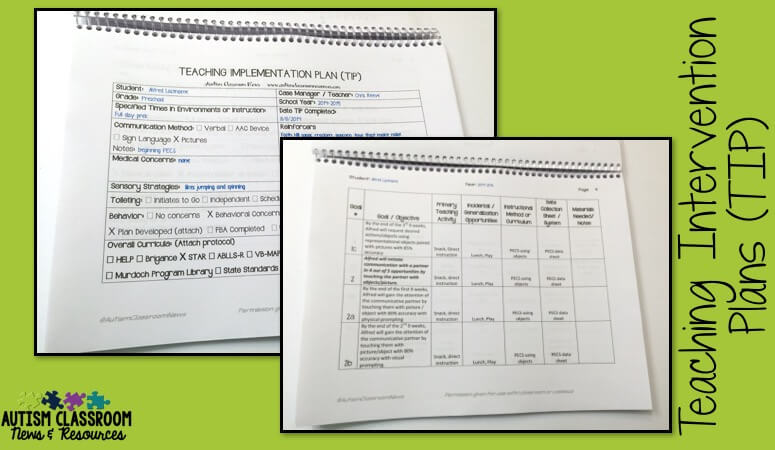
You use the Teaching Intervention Plan (above) to outline the skills being taught, as well as targets specific activities on the schedule with lots of opportunities for practice. You then go on to outline the times that the skill can be generalized, the teaching strategy that is going to be used (e.g., PECS), and how data is going to be collected.
Why Do We Need the Teaching Intervention Plan?
We need to write this information down for a Teaching Intervention Plan (TIP) for a variety of reasons.

- It helps plan out your schedule to meet individual needs.
- The TIP assures each IEP goal is accounted for in the day and with data.
- It is easy to share with instructional assistants so they know what to focus on in activities.
- It’s easy to share with families so they see how the IEP gets implemented.
- Once it’s completed, it allows you to just pull the materials, reinforcers, programs and data sheets you need in each activity.
- It also helps your principal understand during their observations what goals are being addressed for each student.
Looking for More Classroom Setup Help?
I’ll be back next time with Step 2 in the process of Setting Up Autism Classrooms…setting up the schedule.

